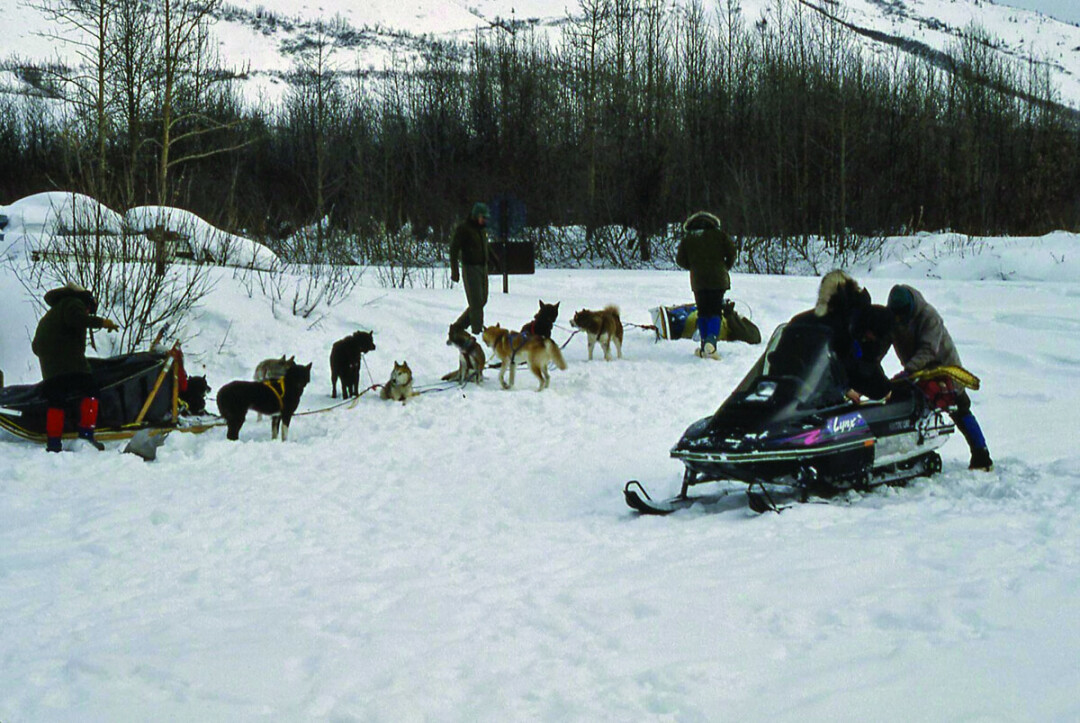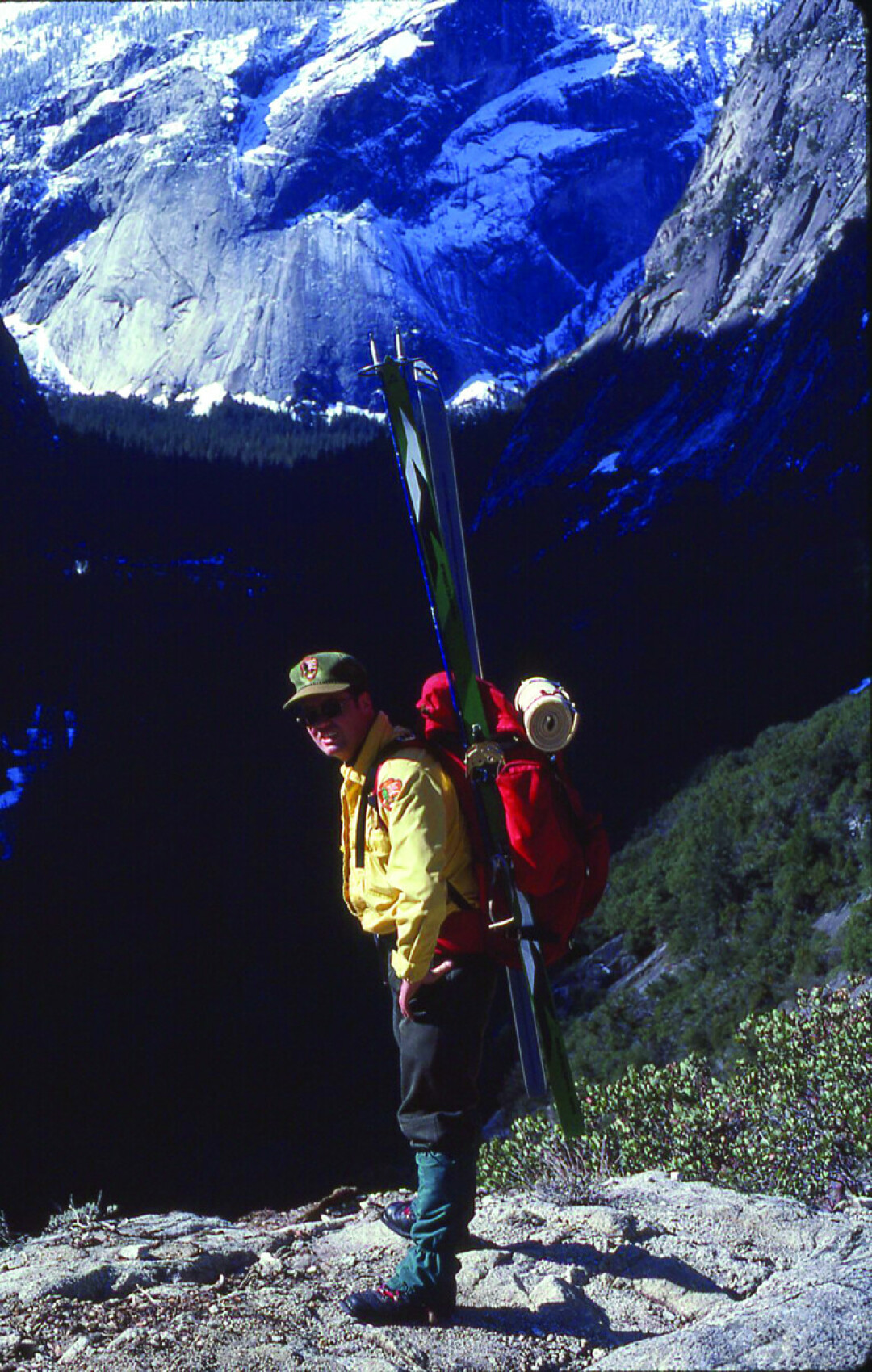Send Ranger Tom Habecker
Saturday Jul. 1st, 2023

Having even a wisp of an idea about what you want to do when you ‘grow up’ is often a difficult concept to grasp. Tom Habecker knew for certain he did not want to be stuck at an indoor job. Fortunately, he found his calling when he was young, which eventually led to a 32-year career working as a National Park ranger. He was stationed at Gettysburg National Military Park in Pennsylvania; National Capitol Parks in Washington, D.C.; Yosemite National Park in California; Glacier National Park in Montana; and finally, Denali National Park in Alaska.
During his three decades as a ranger, Habecker kept copious notes about his exploits, trials, tribulations, and adventures with both animals and humans. He turned his memories into a book, published this year, titled Send a Ranger: My Life Serving the National Parks.
The introduction to the book begins:
“Send A Ranger.” It’s as true today as it was when Stephen Mather, the first director of the National Park Service, wrote those words in 1928. Rangers are the guardians of the parks. They enforce the law, manage disasters, fight fires, provide medical care, and rescue those in distress.
HOW IT ALL BEGAN
“I’ve always been outdoor-oriented,” Habecker says. “I was very involved in Boy Scouts and became an Eagle Scout. I had an opportunity in 1963 to go to Philmont Scout Ranch in New Mexico, with the Boy Scouts. There was a cadre of staff of young men in their late teens, early 20’s called ‘rangers,’ and these guys kind of looked over everybody in the back country and they taught skills classes and handled emergencies—they could do just about anything. I was very impressed by that.”
COLLEGE YEARS
Habecker attended Pennsylvania State University, located about 150 miles from his hometown. He says he selected Penn State because it was a big university and had name recognition.
“The funny thing about that is that I wanted to become a park ranger, and I thought in order to do that I needed a degree in forestry,” he states. “Penn State had a very well-known forestry program, so I started out as a forestry major.”
He struggled some with the coursework involved with this major so, after talking with a college counselor, Hacker switched to a major focusing on recreation and parks. 
POST-COLLEGE YEARS
Although the classes weren’t exactly what he was looking for, a situation occurred that provided him with the key to starting his career as a national park ranger.
“In my senior year at Penn State, around 1968-69, the National Parks Service was expanding into urban areas like New York, St. Louis, and San Francisco,” Habecker says. “They were looking for fresh, young people in park administration programs to become the future managers of urban-type parks. I applied and took the federal service entrance exam and I did really well. I was selected as one of 40 people to participate in this urban intake trainee program. I was given the choice of working in three different places, and I selected Gettysburg.”
Habecker did a practicum at Gettysburg for four months, and was hired into the Parks Service as a full-time employee, which he says is extremely rare.
“Usually, you work seasonally, and then work your way up, but I was hired as permanent from day one,” he says. “I went back to school in September, and I graduated in December of 1969.”
In January 1970, Habecker headed to Grand Canyon National Park, where he attended basic park training for three months. During this time he married his childhood sweetheart, Donna. Once training was complete, the Habeckers moved back east, where Tom was assigned to the National Capitol Parks in Washington, D.C.
During this time, the Vietnam War was in full swing, and Habecker was in line to be drafted. “I took an Army draft physical and was told I’d be called up in two weeks,” he says. “I didn’t want any part of the Army, so I enlisted in the Coast Guard.” Habecker went directly to boot camp in Alexandria, Virginia, and afterwards was assigned to Rocklin, Maine, where he spent four years at a search and rescue unit.
“When my four-year term was up, I wrote a letter to the Parks Service and said, ‘Hey, I’m getting out and I’m reclaiming my job.’ I had career status,” he explains. “I didn’t hear anything, so we moved back to Pennsylvania, and were there about a week when the phone rang. It was the Chief Ranger at Yosemite National Park. He offered me a job.”
YOSEMITE NATIONAL PARK
Habecker and his wife packed up their belongings and headed to California. He held various positions at the park, with his final position being the Tuolumne Meadows sub-district Ranger. During their time at Yosemite, the Habeckers had two daughters, Kelly, born in 1979 and Katie, in 1981.There was never a dull moment for Habecker.
“For two summers I was a back-country supervisor, where I was mounted on a horse and had a mule; I rode 800 miles one summer and 600 the next,” he comments. “My job was to go from station to station and help the other back country rangers who were stationed out there. I did trail patrol, forest regulation, hauled out trash, fixed fences—whatever work needed to be done.”
Yet, his job wasn’t all about riding horses or hauling trash.
“As a beginning ranger, it was a crucible. It was the perfect place to learn a lot of skills,” he recalls. “Yosemite is a very busy place, where we had to do lots of law enforcement, and some pretty heavy-duty stuff.”
He did a great number of search and rescue missions. He was a park medic, which required that he administer emergency medicine in both the front and back country areas of the park. Habecker did bear management, which included darting and trapping bears. He also did snow surveys and firefighting.
GLACIER NATIONAL PARK
After working 11 years at Yosemite, Habecker was looking for a change. “I was getting burned out on arresting drunks, so I applied for a job at Glacier National Park, where there were opportunities to do resource management,” he says. “Well, you are working with grizzly bears, but there was also eagle management and vegetation management. I just wanted some broader horizons.”
Habecker began working as the Lake McDonald Sub-district Ranger, a job located at the park’s headquarters. He supervised 28 people; his duties included overseeing the emergency staff, the campgrounds, law enforcement, rescue units, fire and bear management.
Here’s an excerpt from his book about working at Glacier:
Good morning, I’m in service. Each day, I began my tour of duty with those words. However, September 11, 1986, was my day off, or “lieu day” in government parlance. I was completing my first full year as the Lake McDonald Sub-district Ranger, in Glacier National Park. I was responsible for all law enforcement, fee collection, backcountry, bear management and emergency services for the “headquarters district” on the west side of the park.
It had been a busy year: learning a new job, meeting new employees. Winter was filled with ski patrols, avalanche training, and getting ready for the busy summer. And what a summer it was: a suicide, climbing fatality, numerous medical calls, a car going over the wall on the Going-to-the Sun Road, a fatality on a concessioner-led horse ride. It was much like the mayhem I experienced in Yosemite, just different scenery. I was looking forward to a quiet day off.
`I was relaxing at home when the park emergency phone rang. It was dispatcher Gerry Nelson. “Habecker, get your medical shit together. There’s been a mauling at Granite Park. The helicopter will pick you up in a few minutes.” It was “send a ranger” time.
DENALI NATIONAL PARK AND PRESERVE
Habecker and his wife had always talked about the possibility of living in Alaska, and the opportunity presented itself when a job announcement was posted for Denali. “I knew a couple of people who had worked in Alaska, and I heard some of their stories, and I thought, ‘Wow,’” he says. “I was always interested in Alaska, even as a kid.”
Habecker applied for the job and got it. The position was the North District Ranger. “Denali is six million-plus acres, which is the size of New Hampshire, and it’s three-times the size of Yellowstone,” Habecker explains. “So, we moved to Alaska in December of 1990, and it was fifty below in the Yukon.
An excerpt from Habecker’s book on his exploits in Denali:
September 23, 1991—Flew into two hunting camps on the Swift Fork River. Landed at Amos Lakes to interview reporting party. George Palmer, Jim and I circled in 33CT while the others looked for the moose kill. I got very airsick in 40-knot winds. We seized meat, antlers, etc.
What began as a simple poaching case quickly grew complicated with conflicting reports, multiple violations, a foreign national and a plane wreck. Hunting guide George Palmer reported that a neighboring commercial guide’s client had taken a moose illegally within the original ‘old’ park, where hunting is not permitted.
Habecker spent 15 years at Denali until he retired from the Parks Service in 2005.
NOW AN AUTHOR
Prior to his retirement, Habecker and his wife Donna looked
for land where they could build a home. They always liked Montana, so they’d travel down every so often to see what was available. They bought a 20-acre piece of land and eventually moved to Bozeman.
Habecker now had time to relax, which included reading through the journals he’d compiled over the years. He began writing his book, submitting his work to Falcon Publishing. He didn’t expect to be contacted for some time. Surprisingly, the acquisitions editor got in touch the next day.
“I got this email and it said: ‘Dear Tom, your manuscript landed on my desk for review, and it seems you’ve had a very interesting life. We think it would make a very good book. I’m going to take it to my editor on Thursday and they’ll make a decision.’ The next Thursday I got an email that said, ‘Congratulations, we want to buy your book.’”
Habecker says that when the book came out this past March, it was number one for three straight weeks on Amazon in its category.
“People seem to like this book,” he says. “It really speaks to a lot of people, especially people who’ve worked in this profession. They say, “You have written what it’s really like to be a ranger.’”
Julie Engelhardt is a freelance writer currently based in Louisville, Kentucky. She has more than 30 years’ experience writing for local, regional and national online and print publications. Julie enjoys bird watching, hiking, and visiting the California where she lived for 40 years.
| Tweet |